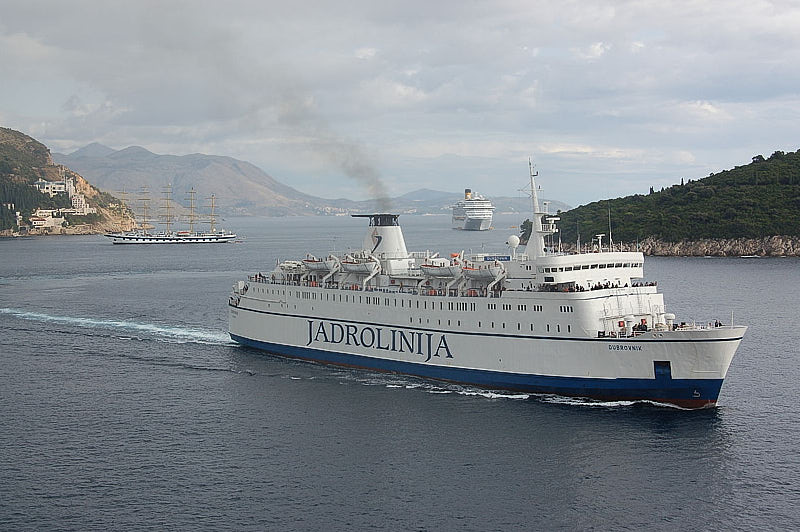- The company reached an agreement with its main creditors and shareholders to reduce its debt.
- The agreement also contemplates the permanence of the Armas family in the capital of the company and the promotion of its ambitious improvement plan.
- The proposal for the refinancing and recapitalization of the existing debt of the Group includes a capitalization of the bonds that constituted the bulk of the debt and that totaled 445.9 million euros, and that after the transaction will remain at 178.4 million euros.
- Commitment of the new majority shareholders -with 94% of the capital- to provide financing for an amount of up to 73.3 million euros to cover any liquidity needs of the Group while carrying out carry out the agreed recapitalization process.
- Once the agreement is completed, the company’s shareholders will be made up mainly of investment vehicles advised by JP Morgan, Barings, Cheney Capital, Bain Capital and Tresidor, as main creditors, and by the Armas family, which will remain as shareholders.
- Appointment of Sergio Vélez as CEO.
On Tuesday 18 April 2023, European Parliament approved the deals reached with EU countries in late 2022 on several key pieces of legislation that are part of the “Fit for 55 in 2030 package”. This is the EU’s plan to reduce greenhouse gas (GHG) emissions by at least 55% by 2030 compared to 1990 levels in line with the European Climate Law.
The reform of the Emissions Trading System (ETS) increases the ambition of the ETS as GHG emissions in the ETS sectors must be cut by 62% by 2030 compared to 2005-levels.
Parliament also voted to include, for the first time, GHG emissions from the maritime sector in the ETS and agreed to the revision of the ETS for aviation.
ESPO welcomes the inclusion of maritime in the EU ETS1 as part of decarbonising shipping. Europe’s ports have consistently called for an ambitious maritime EU ETS that makes the green transition of maritime possible, whilst protecting the competitiveness of European ports.
Whilst ESPO welcomes that a price tag is being put on the emissions produced by ships, the geographical scope of the EU ETS Maritime agreement could still lead to evasive port calls where shipping companies can avoid paying into the ETS by adding a call to a port outside the EU, or by reconfiguring their routes.
European shipowners welcome the formal approval of the new EU ETS law. Earmarking a part of the revenues of the Innovation Fund for the maritime sector can mark a turning point in the decarbonisation of the industry.
At least 20 million ETS allowances, which correspond to around 2 billion Euro under the current ETS carbon price, will be allocated to maritime projects under the Innovation Fund.
- Greece-based Saos Ferries announced officially the purchase of the HSC ALCANTARA DOS from Acciona Transmediterranea (ACCIONA LOGISTICA SA).
- The high-speed craft was laid up in Almeria since January 2020 and served on the Alcúdia-Ciutadella line.
- She will be renamed NISSOS and soon will raise the Greek flag.
- She was built in 1995 in Australia and her carrying capacity is for 550 passengers and 150 cars.
Photo: Transmediterranea
Eventually, Greek A-Ships management announced the purchase of Jadrolinija’s ferry DUBROVNIK.
The Irish-built vessel served for the Croatian State company from 1996 to 2023 and served the Dubrovnik – Bari line. She is currently undergoing a refit at Rijeka (Viktor Lenac shipyard) and will be renamed PRINCE.
She is expected to be introduced on the Igoumenitsa-Corfu-Brindisi line.
A-Ships Management’s other two ferries are chartered to GNV (GOLDEN BRIDGE) and Siremar (GALAXY).
Guangzhou Shipyard has delivered the first of two Moby’s new generation ferries, MOBY FANTASY.
MOBY FANTASY will depart China in the coming days and cross two oceans to then reach the Mediterranean where she will enter service on the Livorno-Olbia route this summer.
With its 237m length, 32m width and a gross tonnage of 69,500 MOBY FANTASY is the largest passenger ferry built so far worldwide, says Moby. It has a capacity of 3,000 passengers and 3,850 lane meters of roro deck.
The new flagship of the Moby fleet will arrive at the port of Livorno by mid-May.
She is the first ferry in the world to obtain EEDI Phase 3 certification with emissions savings of over 50% compared to traditional ferries used on similar lines.
A second ferry, MOBY LEGACY will follow later.
Genoa-based broker firm Ferrando & Massone made public two charter contracts.
- Monohull HSC ISOLA DI VULCANO (520 pax, 57 cars, 30 knots) has been chartered out from Caronte & Tourist Isole Minori to Navigazione Libera del Golfo. The latter confirmed the deal, explaining that she will be used on the regular links between Termoli and the Tremiti Islands in the Adriatic Sea.
- The Maurizio-Aponte-headed Navigazione Libera del Golfo also chartered out the monohull HSC SALERNO JET (445 pax, 30 knots). Blue Jet will use the vessel on the Strait of Messina.
Italy and Egypt “are working” on “launching a new line” of “ro-ro ferries between the ports of Damietta and Trieste.”
The announcement came from Italy’s Ambassador in Egypt, Michele Quaroni, speaking at the presentation of a report on the Suez Canal produced by the SRM Study Centre with Alexbank.
This new line between Egypt and the North Adriatic port, if and when it becomes operational, will make possible to connect “European markets” with Egypt and “other regions” in North Africa, the Ambassador added.
Which shipping company, which port terminals? That was not revealed publicly. However, market rumours report that Samer Seaports & Terminals and DFDS are actively working on that subject











